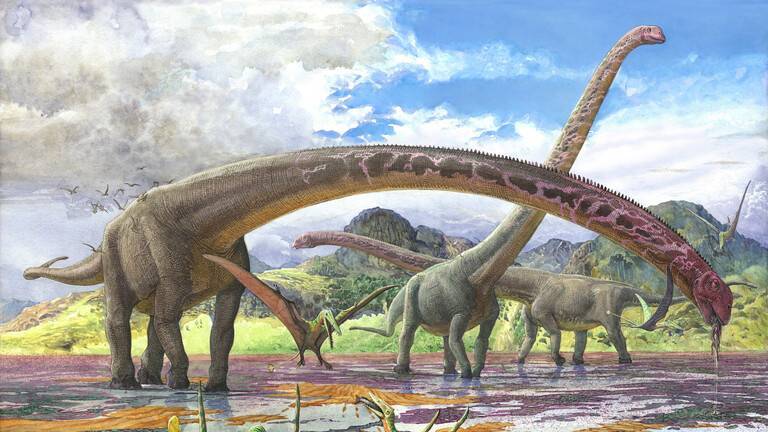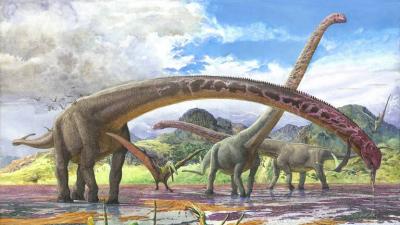Paleontologists have discovered the oldest dinosaur skeleton ever found in Africa in northern Zimbabwe. New fossil analyses revealed that a long-necked dinosaur with coarse teeth and a long tail roamed Zimbabwe around 230 million years ago. The dinosaur, recently dubbed "Mbiresaurus raathi," measured 1.8 meters in length, had a large tail, and weighed between 9-30 kg, making it the oldest dinosaur discovered in Africa to date.
Dr. Christopher Griffin from Virginia Tech said, "The discovery of Mbiresaurus raathi fills a critical geographical gap in the fossil record of the earliest dinosaurs, demonstrating the strength of hypothesis-driven fieldwork to test predictions about the ancient past." These dinosaurs represent the oldest known theropod dinosaurs in Africa, nearly equivalent in age to the oldest dinosaurs found anywhere in the world.
According to scientists, "The earliest known dinosaurs—dating back to about 230 million years ago, during the Carnian stage of the Late Triassic—are incredibly rare and have only been recovered from a few locations worldwide, particularly northern Argentina, southern Brazil, and India."
The skeleton of Mbiresaurus raathi was found in northern Zimbabwe, with only parts of its hand and skull missing. Dr. Sterling Nesbitt, a co-author of the study, stated, "Early dinosaurs like Mbiresaurus raathi show that the early evolution of dinosaurs is still being written with every new discovery, and that the emergence of dinosaurs was much more complex than previously expected."
Based on the analysis of its fossilized remains, scientists believe that Mbiresaurus raathi, a relative of sauropodomorphs, likely stood on two legs and had a relatively small head with small, serrated, triangular teeth. This suggests it may have been herbivorous or carnivorous, according to Dr. Griffin.
Dr. Griffin remarked, "We never expected to find such a complete and well-preserved dinosaur skeleton. When I found the femur of Mbiresaurus, I immediately realized it belonged to a dinosaur and knew I was holding the oldest dinosaur found in Africa." He added, "When I continued digging and found the pelvic bone next to the left femur, I had to stop and take a breath—I knew that much of the skeleton was likely there and still connected like it was during its life."
Scientists hope that this new discovery will shed light on the timing and location of early dinosaur migrations when the continents of the Earth were joined together in a single giant landmass known as Pangaea. During this time, approximately 230 million years ago, it was believed that the climate was divided into climatic belts, influencing the distribution of animals.
According to scientists, the climate of the giant continent was divided into latitudinal bands with strong wet and dry climates, while areas at higher and low tropical latitudes were more moderate. Dr. Griffin explained, "As dinosaurs initially diverged under this climatic pattern, the early distribution of dinosaurs would have thus been controlled by latitude. The oldest dinosaurs are known from nearly the same ancient latitudes along the temperate southern climate belt that existed at the time, roughly 50 degrees south."
Therefore, scientists deliberately targeted northern Zimbabwe, as it lies along this climatic belt and bridges the gap between southern Brazil and India during the Late Triassic. Michel Zondo, curator of the Natural History Museum of Zimbabwe, stated, "The discovery of Mbiresaurus is an exciting and special find for Zimbabwe and the field of paleontology as a whole."
Notably, the fact that the skeleton of Mbiresaurus is nearly complete makes it an ideal reference material for further discoveries.




